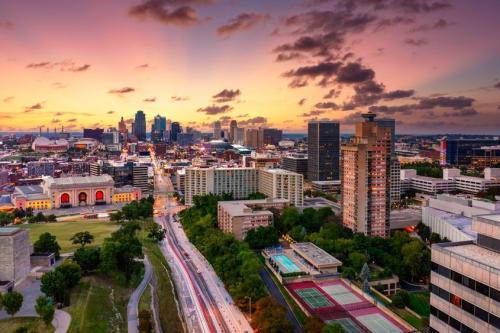For the past year-and-a-half, I have visited dozens of cities to discuss the Metropolitan Revolution, the book I co-authored with Jennifer Bradley in June 2013. Today’s release of the paperback edition prompts some brief observations about what I have seen and heard.
There is an ongoing inversion in the relationship between the level of federal gridlock and the scale of metropolitan activism in the United States. The federal government, if it is possible, has become even more dysfunctional since the book was published, failing to perform even basic functions (e.g., reauthorize federal transportation programs) let alone tackling critical challenges (e.g., enact immigration reform). As I have written elsewhere, our feeble national government results from long-term structural demographic and fiscal shifts as much as short-term bouts of partisanship. In other words, we shouldn’t expect a return to the halcyon days of bipartisan comity any time soon.
While the federal government drifts, city and metro area leaders, by contrast, have responded with affirmative energy, collaborative problem-solving and pragmatic purpose. They fully understand that the cavalry is not coming. Chicago, Jacksonville, Lexington, and Louisville are taking steps to grow manufacturing jobs and upgrade the skills of workers for those jobs. Buffalo, Chattanooga, Detroit and Philadelphia are growing new innovation hubs in their downtowns and midtowns. Charleston, Portland and San Diego are expanding trade with mega cities in rising nations. Los Angeles, Seattle and Washington, D.C. are boosting the minimum wage to address widening income inequality and sluggish wage growth for low- and moderate-income workers.
City and metropolitan leaders have shown, in short, that the federal republic is alive and well while the federal government becomes smaller in stature and relevance. And this is only a glimpse of the progress underway.
So where are things headed? Three things to watch, all of which I will be writing about extensively in the coming months.
First, innovation begets innovation. As city and metro leaders see the fruits of their labor, the natural impulse at the local level is to take on more challenges rather than rest on laurels, particularly since tangible benefits accrue to communities that are “first movers.” Have a problem to solve? Be assured that a community somewhere is already working on the solution.
Second, a burst of innovative finance is inevitable. As Washington scales back, financing of critical investment must come from an unprecedented collaboration between the public, private and civic sectors. I call this aggregation of capital the “new metro finance” and it includes mechanisms as disparate as voter referendum, land value capture, public private partnerships, pooled philanthropic resources and impact investing.
Finally, a devolution revolution is on the horizon. The more cities and metropolitan areas innovate, the more they will demand that states and the federal government get with the program and act in the service of local vision and priorities. In some cases, this new logic of federalism will require smarter investment; in other cases, more empowerment and flexibility drawing from the “devo-max” wave underway in Britain. In all cases, the political power of cities and metros working together is too great to ignore or deny.
Eighteen months ago, Jennifer and I concluded The Metropolitan Revolution with this clarion call:
“America is a metropolitan nation. In this century, starting in this decade, we will finally and fully start acting like one.”
We still believe.
Over the next several weeks, The Avenue will host a series of guest blogs by leaders featured in the Metropolitan Revolution, updating us on their progress.



Commentary
Report from the Metropolitan Revolution
December 11, 2014